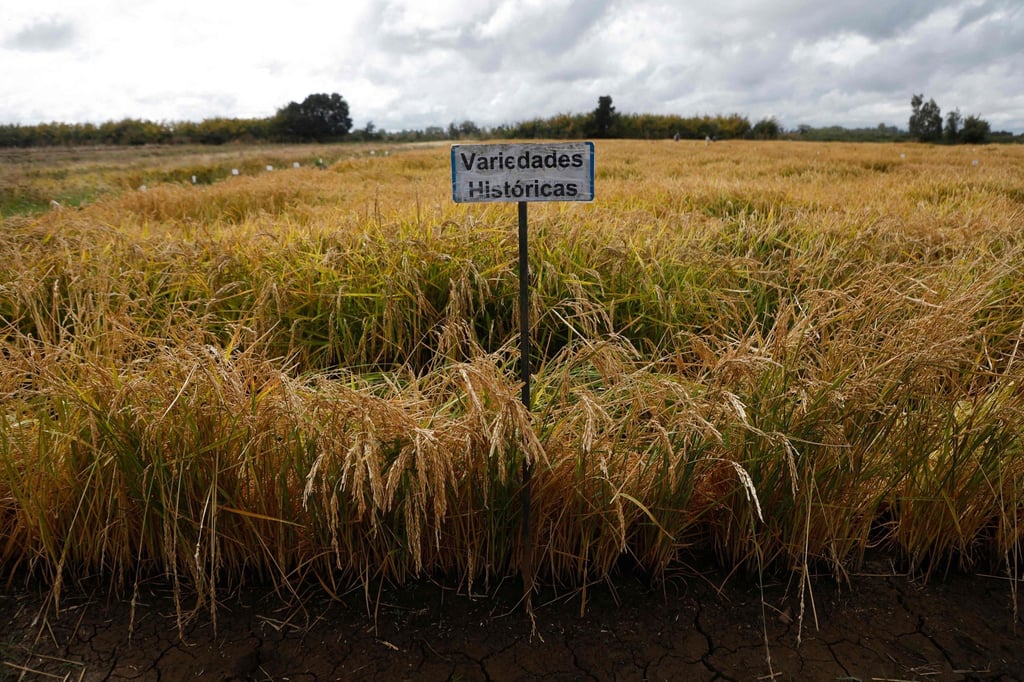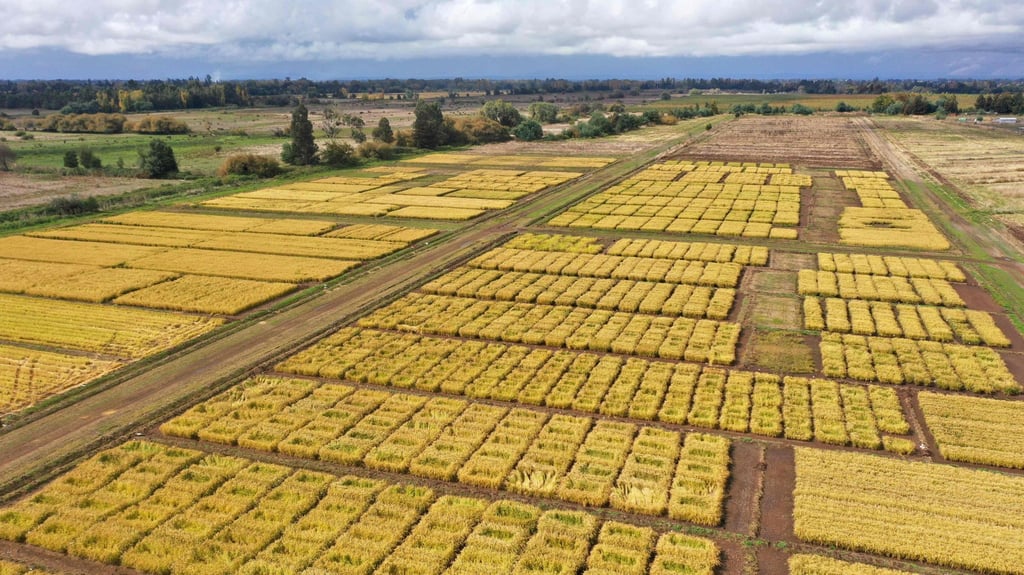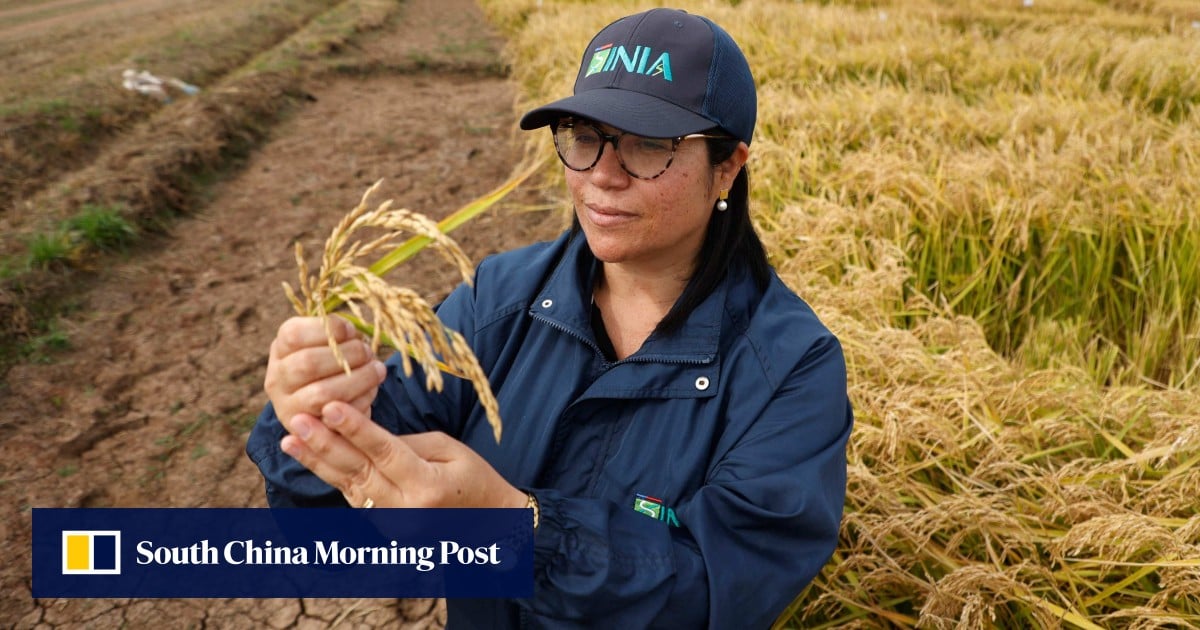A cold, dry part of Chile might not sound like the best place to grow rice, a famously thirsty grain that thrives in tropical conditions.
However, a new strain of the world’s favourite cereal developed by scientists in the drought-plagued South American country has generated hope that rice can be grown in seemingly inhospitable conditions.
Using an innovative planting technique, Javier Munoz has been trying out the “Jaspe” strain created by experts at the Agricultural Research Institute’s (INIA) rice breeding programme. The INIA is part of the Chilean Ministry of Agriculture.

A sign that reads “Historical Varieties” is pictured at the INIA experimental rice cultivation site in Chile. Photo: AFP

An aerial view of INIA’s experimental rice crops in Chile. Typically grown in wetter, tropical areas, rice cultivation in Chile has been hampered by an unprecedented megadrought, now in its 15th year. Photo: AFP
Using Jaspe in combination with a growing method that requires only intermittent watering cuts the Munoz family’s water consumption in half in a country that has for generations cultivated rice in flooded fields, or paddies.
